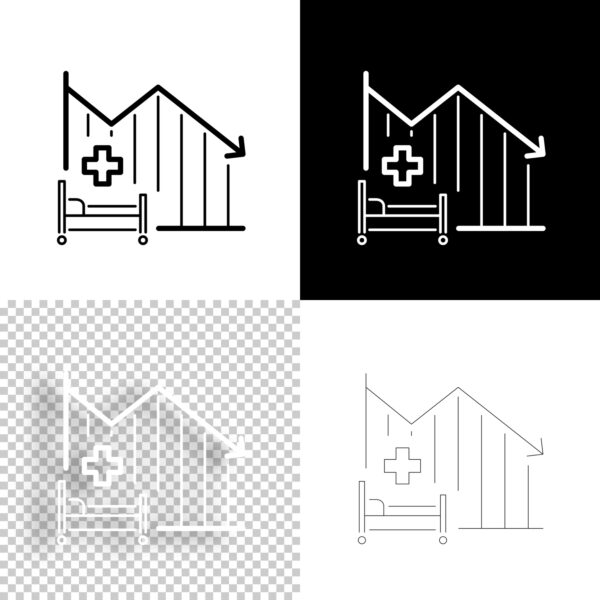
As the Covid-19 pandemic surged in 2020, hospital beds became one of the most sought-after resources in the country. Even now, bed capacity is stressed in several parts of the country.
To manage Covid-19 patient surges, while also continuing to care for non-Covid patients, hospitals had to innovate. And technology became a key element in their redesigned operations strategy.
 In an interview with MedCity News, MultiCare Health System’s Dr. Michael Meyer discussed how the health system handled hospital capacity amid the worst of the Covid-19 patient surges and the technology that helped see them through. Meyer is physician executive of MultiCare Health System’s Pulse Heart Institute in Tacoma, Washington, and former CMO of MultiCare Tacoma General Hospital.
In an interview with MedCity News, MultiCare Health System’s Dr. Michael Meyer discussed how the health system handled hospital capacity amid the worst of the Covid-19 patient surges and the technology that helped see them through. Meyer is physician executive of MultiCare Health System’s Pulse Heart Institute in Tacoma, Washington, and former CMO of MultiCare Tacoma General Hospital.
Note: Responses have been edited for length and clarity.
Question: What were some of the biggest challenges you faced in terms of hospital capacity over the past year?
Meyer: Over the past year, two of the biggest challenges we faced due to the pandemic were the need to increase operating room access for our surgeons and figuring out how to accommodate the backlog of surgical cases, while accommodating the need for inpatient beds for Covid patients as the top priority.
In the first wave, the bottleneck was clearly lack of personal protective equipment, and we were counting PPE availability in the hours and days of when we’d run out. We learned a lot from the first wave, and [we] were luckily able to avoid the pitfalls we ran into the first time around when the second wave hit.
In the second wave, it was more about bed capacity and staffing. In addition to stocking up on PPE, we also learned how to reconfigure our hospitals to have certain sections dedicated to Covid-19 patients, limit visitors and implement advanced air filtration systems for improved circulation.
Our schedulers, administrators and department chairs are burdened every day with reconciling the need for more OR access and the day-to-day constraints limiting surgeon satisfaction. So, these learnings have allowed us to get to a place where we can try to avoid canceling surgical cases, so operating room and bed utilization is being paid attention to more than ever.
Question: What types of technology did you employ to help manage patient surges?
Meyer: In each Covid wave, we developed a backlog of surgical cases. In order to [work through the backlog], our leadership team realized we needed a scalable, cost-effective solution that would address these challenges, maintain our brand and ensure a strong return on investment. With these ultimate goals in mind, we leaned on our existing partnership with LeanTaaS even further to support us during this crisis.
The company’s iQueue for Operating Rooms was able to help us open up more time and make it readily available to clinics, streamline OR scheduling workflows, and increase transparency, satisfaction and volume.
Specifically, the tools streamlined the process and have not only helped our existing surgeons eliminate their case backlogs, but have also provided ease of access to open time for surgeons who were looking to bring new or more cases to our facilities.
We have even been able to allow our schedulers to work remotely during the pandemic — which would have been previously unheard of due to all of the back-and-forth phone calls and fax communication that went on for each and every case.
By providing real-time access to OR metrics across the organization and with our surgeons, the historically challenging, time-consuming and often difficult conversations around an individual or group’s block utilization have become more productive.
Question: What hurdles did you face while implementing new technology? How did you overcome those hurdles?
Meyer: The biggest hurdle is managing change. We like partners like LeanTaaS with whom we developed a strong partnership because their team doesn’t just implement the technology and walk away. They listen to our evolving needs and provide product enhancements for greater visibility into the challenges we are facing.
In the two years since implementing their OR tools, and prior to Covid’s first wave, we had experienced a 15.2% increase in case volume and a 12.4% increase in primetime utilization.
We saw a great opportunity to use technology to our benefit and significantly decrease the cost of care by gaining efficiencies that are not obvious.
Question: Looking back, would you change your capacity management strategy in any way? If yes, in what ways?
Meyer: Looking back, we probably could’ve been more aggressive with beefing up staffing models and bed expansion planning during the onset of the pandemic. We saw over 100% occupancy of our hospital during the summer of 2020, which meant patients were boarding in the emergency department and in other non-traditional places, so we were challenged daily with patient placement. Add to this the inability to transfer to non-acute care facilities, since most were either full or had their own Covid issues, and we were dealing with gridlock.
Having a patient transfer center was an essential and powerful way to centrally place patients in the correct areas. Our experiences from the previous waves have improved our tools and processes, so we are now able to assign patients to the correct part of the hospital much faster than the several hours it used to take. This can greatly help with mitigating surges in hospitals and making sure every patient gets the best care possible.
[Also] make early plans to isolate the Covid patients from the general population, if possible. It may sound like common sense, but we left in place all structural changes from the initial patient surge because we were unsure of the future. We have reimplemented some of those previous plans with changes from that experience. This has allowed us to also have bed capacity on hand to continue surgeries and other procedures.
Question: What hospital capacity challenges do you think hospitals will face this year? What can they do to prepare?
Meyer: Covid-19 has changed nearly everything for hospitals and healthcare organizations like us. For over 10 months, healthcare providers have reallocated their time, energy and resources to address the pandemic, leading to the creation of backlogs in many practice areas, with elective surgery being one of the highly impacted areas.
As we look ahead to 2021, unfortunately, hospitals will still be facing these same issues and managing inpatient bed capacity will continue to be a complex challenge. We have planned and unplanned demand coming from varied admitting sources, including emergency departments, operating rooms, clinics and other hospitals.
Patient volumes vary by hour, day of the week, service and level of care, but the good news is that we have technology on our side that can help us get through some of the darkest moments the healthcare system has ever seen.
Photo: MultiCare Health System, bgblue, Getty Images










